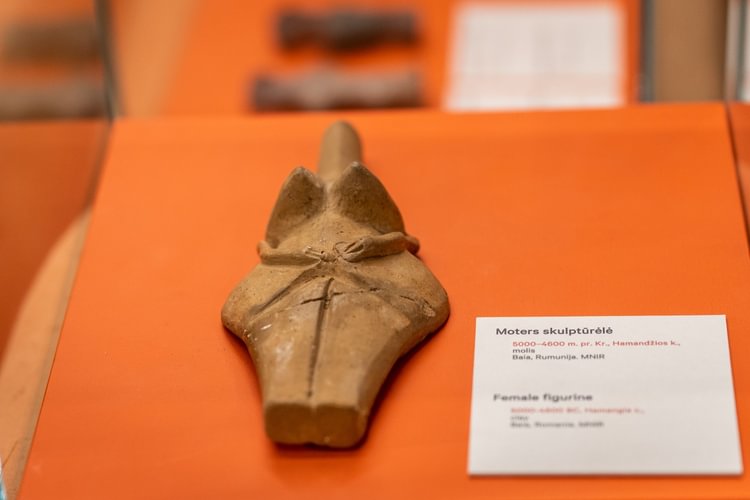UNESCO-recognized Centennial of World-Known Lithuanian Archeologist Marija Gimbutas Celebrated in Vilnius
Vilnius, the capital of Lithuania, honors the centennial of the world-famous Lithuanian archeologist and professor Marija Gimbutas with an exhibition “Goddesses and Warriors” containing 300 exhibits that helped her formulate her globally-recognized hypotheses on Proto-Indo-European accent, female deities. UNESCO also commemorated the life and work of the archeologist with an exhibition in Paris.
Vilnius, the capital of Lithuania, is celebrating the 100th anniversary of the birth of Marija Gimbutas (also known as Marija Gimbutienė)—a world-famous Lithuanian-born archeologist and former professor at the University of California, Los Angeles (UCLA)—with an exhibition based on her archeological research on ancient European cultural and linguistic development origins.
Best known for her pioneering hypotheses on European cultural development and identity, as well as a matristic society based on gender equality, Gimbutas was widely recognized within the global scientific community. Even Joseph Campbell, a famous U.S. mythologist, writer, and lecturer, best known for his archetypal hero studies in mythology, stated that her work around the reconstruction of the Proto-Indo-European accent might be compared to deciphering the inscriptions on the Rosetta Stone—an ancient Egyptian stone inscribed in hieroglyphs, demotic script, and the Greek alphabet.
The archeological achievements of Gimbutas, and, especially, the hypothesis in her most notable work “The Goddesses and Gods of Old Europe,” proposing that the original settlers of southeastern Europe worshiped mainly female deities, maintaining a matristic social structure, also inspired the feminists of the 80s.
Given the global appreciation of the archeologist by the academia and different communities—artists, feminists, spiritual people—UNESCO has listed the centennial of Gimbutas as a significant event of 2021. The life achievements of the archeologist were honored with an exhibition in the UNESCO headquarters in Paris which was also set to be moved to the U.S.
At the same time, Vilnius, and particularly, the House of Histories, the newest branch of the National Museum of Lithuania, is hosting an exhibition to commemorate the legacy of Gimbutas as well as highlight her research on European origins and cultural identity. The exhibition “Goddesses and Warriors” is composed of three parts, covering 5,000 years of history: the Goddesses era, the warrior period, and the life story of Gimbutas herself.
“The archeological findings, which allowed Marija Gimbutas to form her hypotheses on European cultural transformation, are on display in her birth town, Vilnius,” said Rūta Kačkutė, Head of the National Museum of Lithuania. “300 unique exhibits, ranging from women statues, amulets, anthropomorphic vessels to spears, arrowheads, skulls, and even a burial mound, as well as additional material have been brought over specifically for the centennial from Romania, Bulgaria, Moldova, Ukraine, Croatia, Italy, Georgia, Finland, Latvia, and Lithuania.”
The House of Histories, exhibiting the display “Goddesses and Warriors,” is a modern space, opened to visitors in May this year, where history merges with current reality and their synthesis is brought together by curators. The branch is located in a 19th-century building, which, throughout the centuries was used as military barracks, then a residential school, until it finally became a part of the National Museum of Lithuania.
The exhibition is displayed from September 23rd, 2021, till March 13th, 2022. More information on the exhibition and other events at the National Museum of Lithuania is available here.



